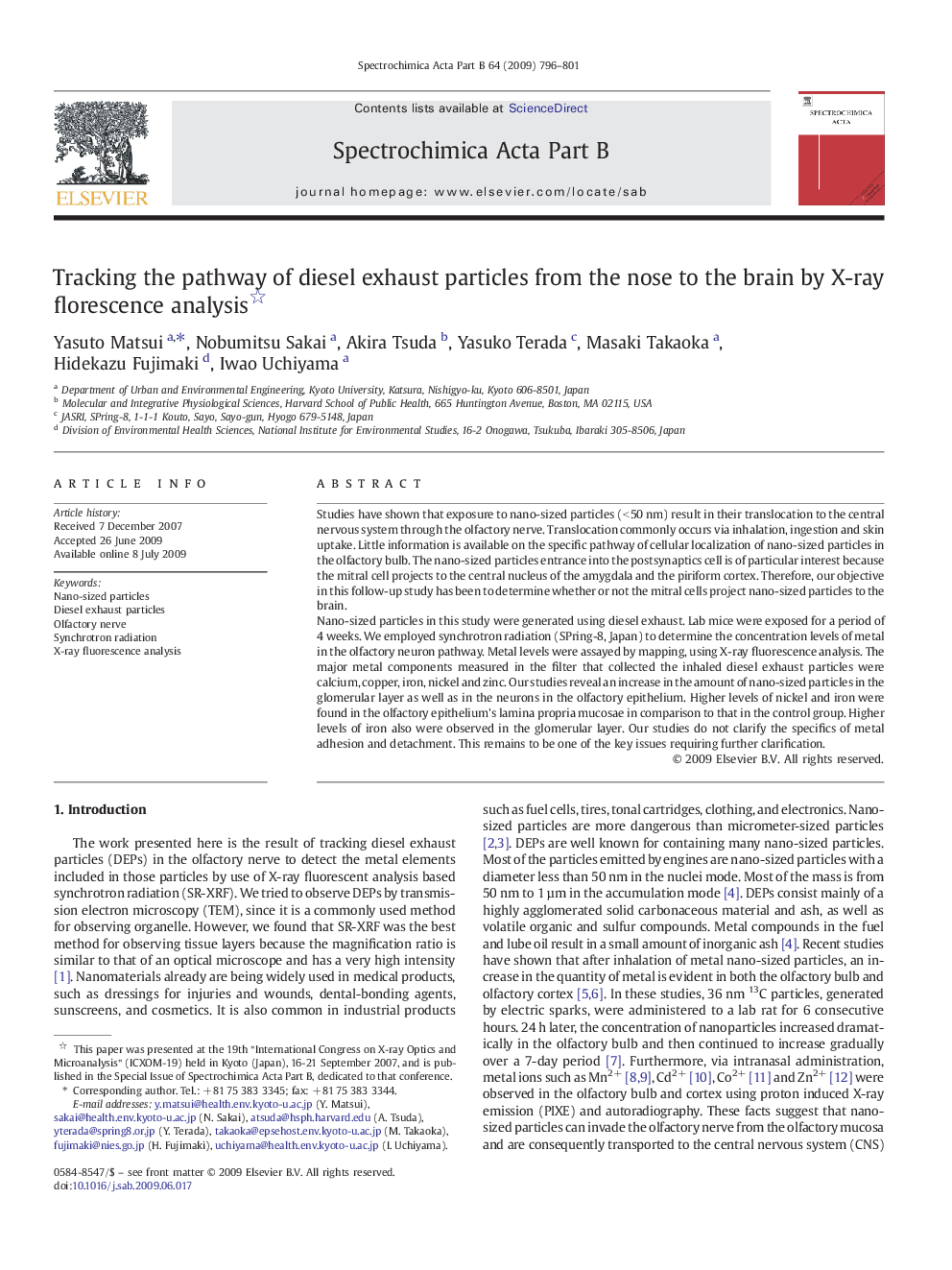| Article ID | Journal | Published Year | Pages | File Type |
|---|---|---|---|---|
| 1240883 | Spectrochimica Acta Part B: Atomic Spectroscopy | 2009 | 6 Pages |
Studies have shown that exposure to nano-sized particles (< 50 nm) result in their translocation to the central nervous system through the olfactory nerve. Translocation commonly occurs via inhalation, ingestion and skin uptake. Little information is available on the specific pathway of cellular localization of nano-sized particles in the olfactory bulb. The nano-sized particles entrance into the postsynaptics cell is of particular interest because the mitral cell projects to the central nucleus of the amygdala and the piriform cortex. Therefore, our objective in this follow-up study has been to determine whether or not the mitral cells project nano-sized particles to the brain.Nano-sized particles in this study were generated using diesel exhaust. Lab mice were exposed for a period of 4 weeks. We employed synchrotron radiation (SPring-8, Japan) to determine the concentration levels of metal in the olfactory neuron pathway. Metal levels were assayed by mapping, using X-ray fluorescence analysis. The major metal components measured in the filter that collected the inhaled diesel exhaust particles were calcium, copper, iron, nickel and zinc. Our studies reveal an increase in the amount of nano-sized particles in the glomerular layer as well as in the neurons in the olfactory epithelium. Higher levels of nickel and iron were found in the olfactory epithelium's lamina propria mucosae in comparison to that in the control group. Higher levels of iron also were observed in the glomerular layer. Our studies do not clarify the specifics of metal adhesion and detachment. This remains to be one of the key issues requiring further clarification.
